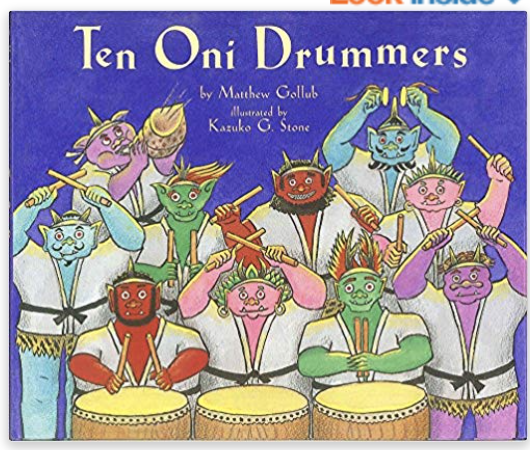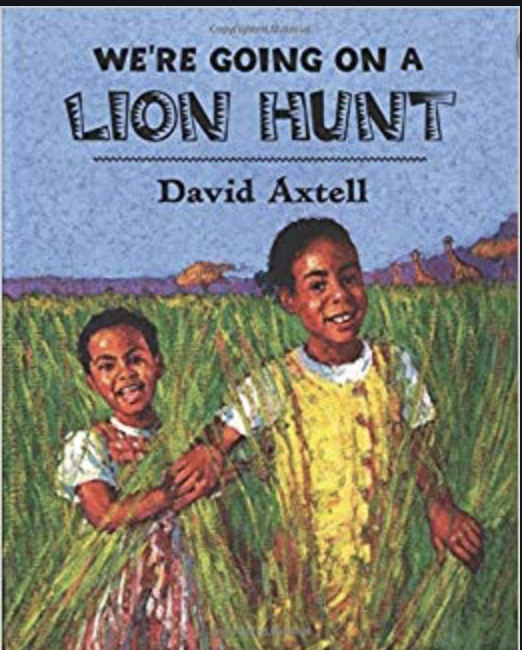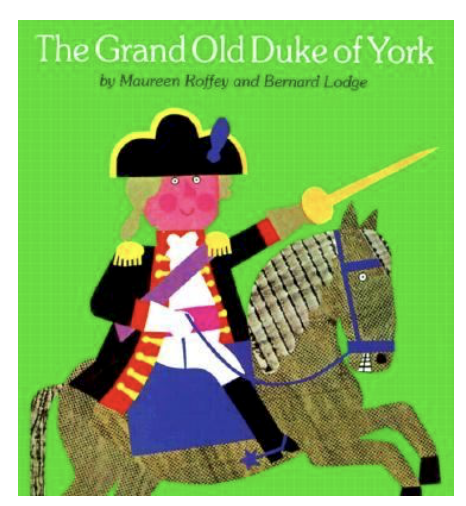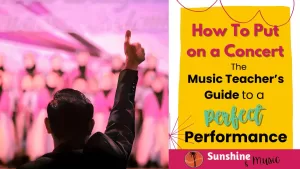Are you looking for new ideas on how to teach dynamics in music? How about teaching tempo? I don’t know about you guys, but it seems like my kids need to hear vocabulary words about 100 times before they stick. Especially ones having to do with tempo and dynamics.
So over the years I’ve developed a plethora of activities from Carnival of the Animals to Star Wars and back again to slowly and repetitively develop my students’ musical vocabulary.
One great way to add a little variety is to throw in a book. Here are some of my tried and true favorite children’s books for teaching tempo and dynamics.
Teaching Dynamics with Ten Oni Drummers

A Great Book from a Great Author
If you’ve never checked out any of the music-themed books by Matthew Gollub, you really should. Many of you may be familiar with The Jazz Fly, but this book actually gets more use in my classroom.
I’m not sure exactly where all the parts of this lesson came from. I know the book was at my previous school when I took over, but as for the lesson, I’m not sure what all came from where.
The Lesson Sequence
Week One: Listen and Evaluate Dynamics
The kids listen to me as I read the story. I start off with a quiet voice and build louder and louder as more and more Onis join the story. Then we talked about what changed during the story – the tempo or the dynamic (dynamic). What dynamic was it at the beginning (piano)? What dynamic was it at the end (forte)?
NOTE: At this point, my student know the words tempo, dynamic, forte and piano. We will get into mezzo-piano and all that jazz a different year – but you could totally use this book to address more specific dynamic levels if that’s where you are at.
Week Two: Learn a Chant and Apply Dynamics
Next week when we come back to the story, I teach them a chant that is part of the book:
“Ya — tun taka tun taka tun taka tun!”
We play that rhythm on our laps each time a new Oni appears (there are ten, as the book title suggests). Students start piano and grow to forte. This is also a great time to bring up taiko drumming.
Week Three: Adding Drums
For the final performance, I have a line of tubanos (5-6). Students form lines behind the drums and instead of playing the call on their laps after each Oni 1-10, they get to play it on the tubano, then go to the end of the line. Each time we re-read the book, we go back over the vocabulary of dynamics, piano and forte.
Tempo and Dynamics with Going On a Lion Hunt

Children’s Book With African Scenes
I love the illustrations in this book. It is the same idea as going on a bear hunt, but I just love the idea of a safari trek in Africa instead. It throws in a little bit of a multi-cultural component and also I like to have books where students of different ethnicities get to see themselves represented.
Again, I believe that pieces of this lesson came from all over. I think I discovered the book myself, but the idea of adding In the Hall of the Mountain King came from a workshop, but not sure who. And of course the story and acting it out is an old one – probably from summer camps and such. If anyone knows where this idea originated from, please let me know so I can give proper credit.
Acting Out the Book
First time through, we just read the book and act out the different actions:
- “Going on a lion hunt” – hands pat back and forth
- “look up ahead” – hand to forehead
- “can’t go under it, etc” – point under, over, around and through
- for each obstacle (swamp, tall grass, etc), act out how you would move through it. This is a great chance to exercise some Laban principles!
- in the cave – act out feel for ear, teeth, etc
Adding Music and Discussing Tempo and Dynamics
Second time through: “Well class, last week we tried to catch a lion but we weren’t successful. So I thought maybe if we did it without talking this time, we might be able to sneak up on him. You remember the way from last time right?”
Then, I turn on “In the Hall of the Mountain King” and we act out the story without the book or words (sometimes I may whisper to help kids know where we are in the story, but mostly I just mouth the words). To time it about right – each time the melody repeats is a new obstacle.
By the time the strings start to sound menacing you should be in the cave and then the big crescendo is where you discover it’s a lion and run back through everything. Practice it once or twice without the kids to make sure you feel comfortable with the musical cues before adding it to your lesson.
When the song is done, we talk about what the tempo and the dynamics are at the beginning versus the end.
Teaching Tempo with The Grand Old Duke of York

Introducing the Word Tempo Through Literature and Movement
I haven’t done this one with a book before, but you can totally add the book in. I love using the Noble (or Grand Old) Duke of York to teach about tempo.
First time through, we sing the song and march to the beat. Each time I say up, everyone reaches up above their heads and whenever I say the word down, we touch the ground. Then we all say “change the tempo” and I do the song at a different tempo (slow, medium, fast or very fast). I have the students determine what the word tempo means.
Here’s a video of the activity and how I use it to teach about tempo.
Defining Specific Tempos
The next time we do it, we review the word tempo. We do the same activity, except this time I define the different tempo words (largo, moderato, allegro and presto). As we perform each tempo, the students determine the meaning of the word (ex, largo means slow).
Spin the Wheel and Define the Tempo
Then, to hammer it home a bit more, we bring the same activity back next week. This time, I have a spinner on my SMARTboard with the four tempo words. The student gets to spin and then tell me what the word means. You could have the class define it one week and then turn it into an assessment the week after by having the individual student define the word they landed on. Up to you. But the kids love it because of the different speeds and the fact that they get to move and learn.
https://youtu.be/tE2wk7nylz0







3 Responses